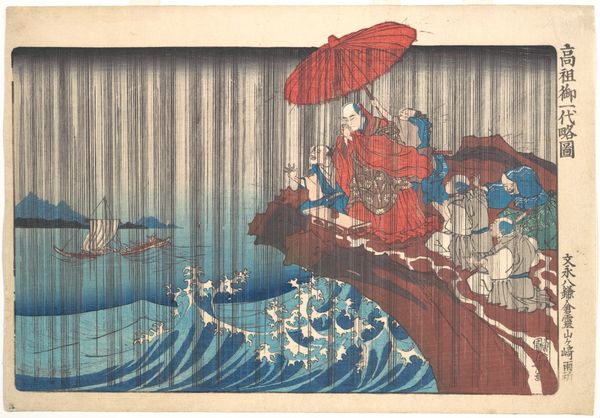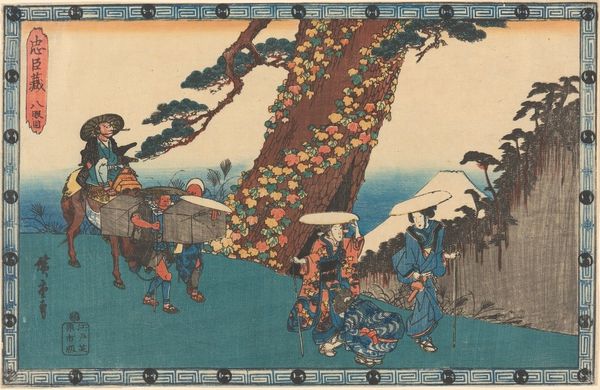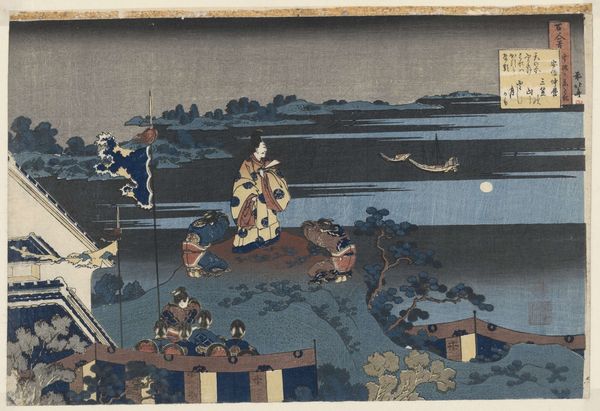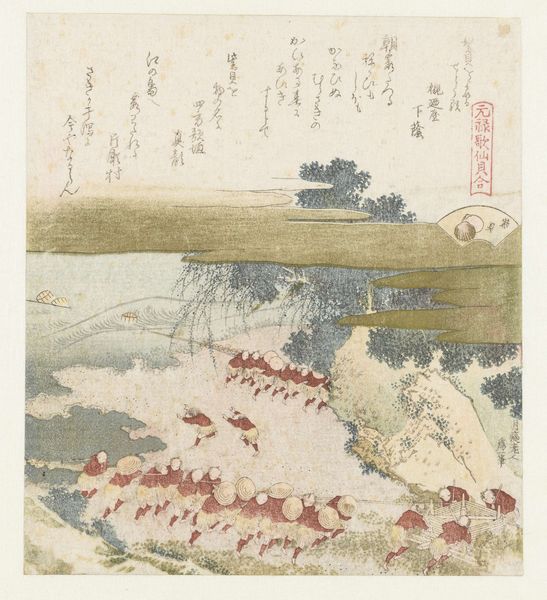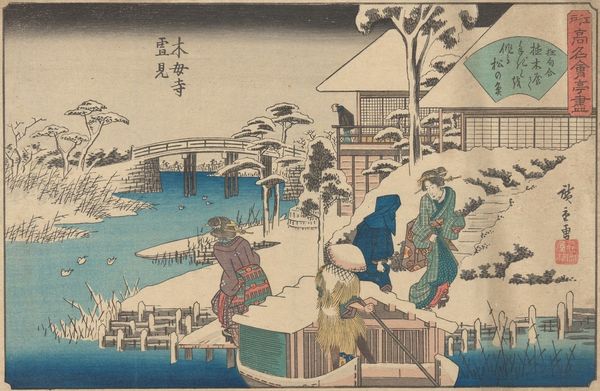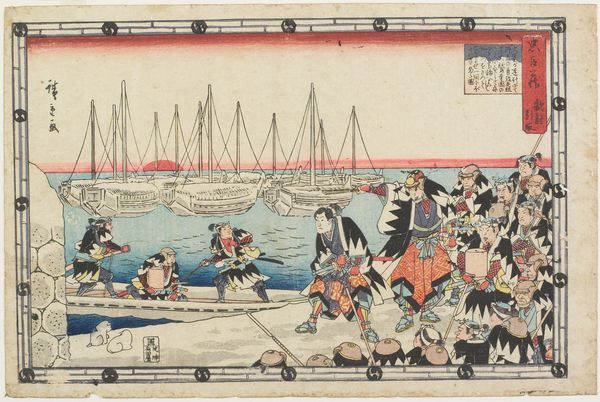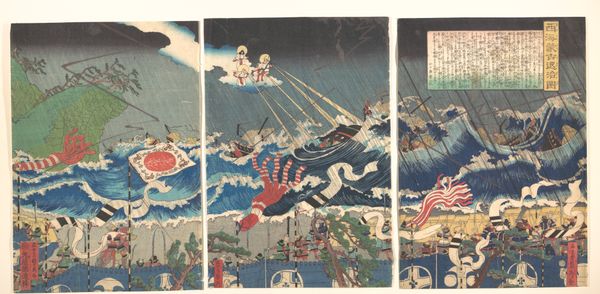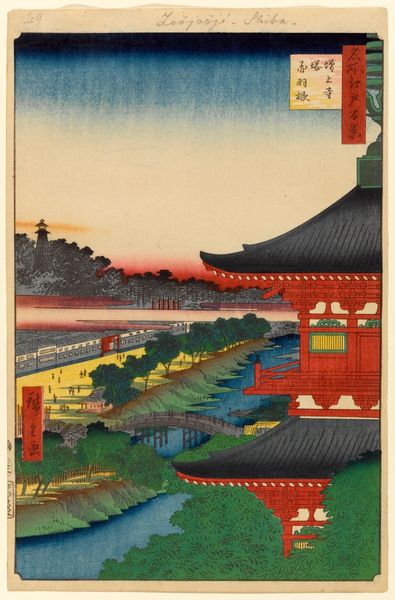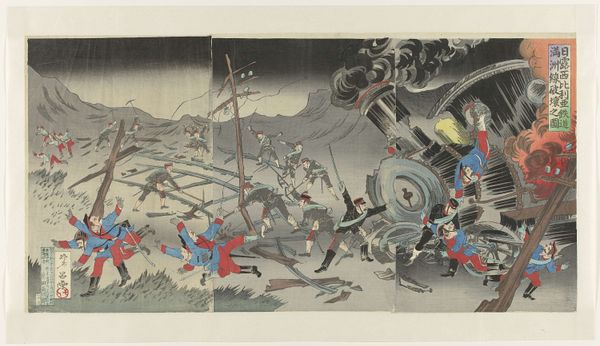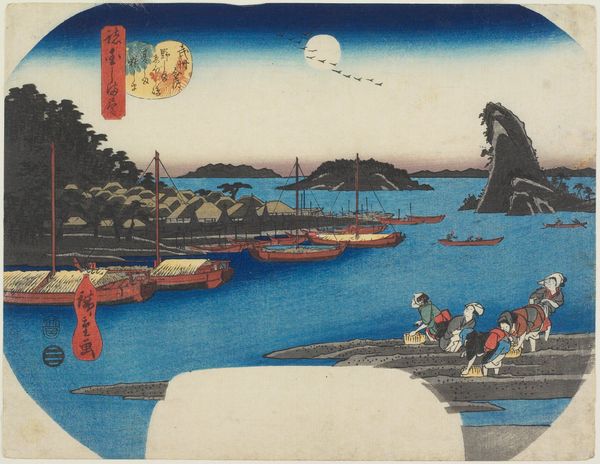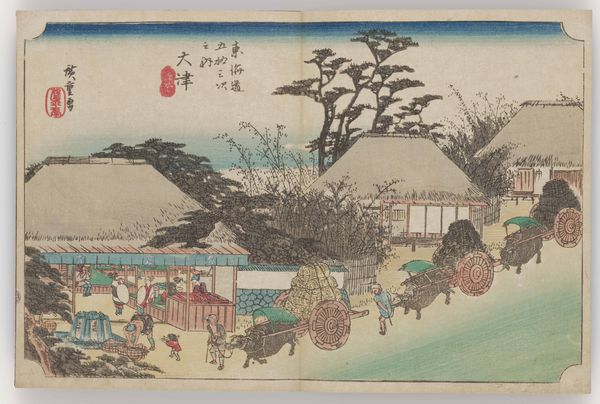
Copyright: Rijks Museum: Open Domain
This is a woodblock print made by Utagawa Kunisada in Japan, likely around the late 1800s. It depicts the Japanese occupation of Jiuliancheng, a Chinese city, during the First Sino-Japanese War. The image is packed with visual codes of nationalism and military prowess. Note how the Japanese soldiers are rendered in neat, orderly lines as they advance, their uniforms bright and clean, waving the Japanese flag, whereas the Chinese are relegated to the margins of the image. The print seems to function as propaganda to portray the Japanese army as modern, disciplined, and destined to triumph. These prints were made for a mass audience in Japan at a time of rapid modernization and rising imperial ambition. Understanding this artwork requires knowing the history of Japanese expansionism and the institutional forces that shaped its artistic production. We might look at the newspapers and other print media of the period to understand better the social context in which it was made.
Comments
rijksmuseum about 2 years ago
⋮
The Japanese army made rapid progress. At the end of October 1894 the fortified town of Jiuliancheng in Manchuria was captured. The Chinese army had retreated, thus it could be taken without a struggle. This propagandistic depiction portrays the pullout as a flight in blind panic.
Join the conversation
Join millions of artists and users on Artera today and experience the ultimate creative platform.
